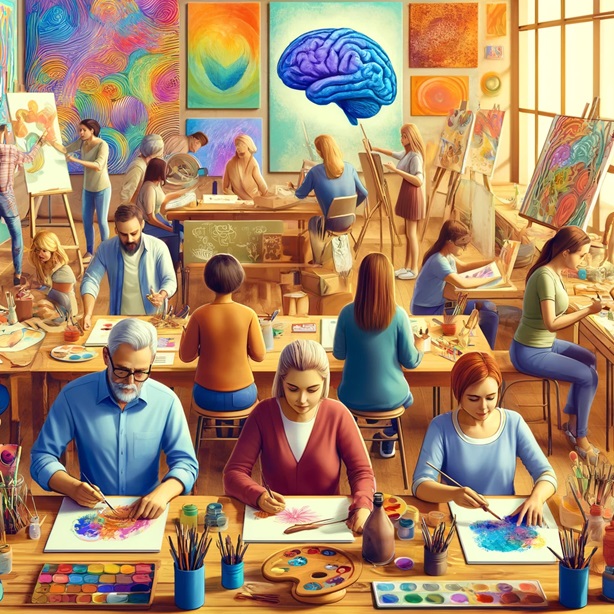The Intersection of Art and Brain Health
Art therapy is not just a tool for emotional expression; it is also a powerful catalyst for cognitive development and brain health. Engaging in artistic activities such as painting, drawing, or sculpting can significantly enhance neuroplasticity—the brain's ability to reorganize itself by forming new neural connections in response to learning or experience. This article explores the deep connection between art and cognitive enhancement, underscoring how creative expressions contribute to brain vitality and resilience.
How Art Therapy Promotes Neuroplasticity
Art therapy stimulates the brain in unique ways, involving a combination of motor skills, creativity, and emotional processing. This multi-faceted stimulation encourages the brain to form new neural pathways, enhancing cognitive flexibility and resilience. Activities like drawing complex patterns or blending colors require the brain to adapt and evolve, promoting greater neuroplasticity. Scientific studies have shown that regular engagement in these artistic processes activates diverse areas of the brain, including those involved in fine motor skills and visual imagery, which are crucial for cognitive enhancement.
Cognitive Benefits of Artistic Engagement
Regular participation in art therapy can improve various cognitive functions including problem-solving abilities, memory, and attention. The process of creating art provides a mental workout, challenging the brain to envision, plan, and execute complex artistic designs, which improves overall mental agility and cognitive reserve. For example, when individuals paint from memory, they not only recall images but also refine their spatial and color recognition skills, leading to enhanced mental acuity.
Art Therapy and Mental Health
Beyond cognitive enhancement, art therapy offers substantial mental health benefits. It serves as a form of expression that can alleviate stress, anxiety, and depression. Engaging in art helps individuals process emotions in a constructive way, fostering emotional healing alongside cognitive growth. Art therapy has been employed effectively in various therapeutic settings, including stress relief workshops and trauma recovery programs, illustrating its extensive benefits.
Art as a Tool for Lifelong Brain Health
Art therapy is beneficial across the lifespan, offering significant advantages from childhood through old age. For the elderly, particularly those dealing with conditions like dementia and Alzheimer's disease, art therapy can be a vital tool in maintaining cognitive function and personal identity. For younger individuals, it builds a foundation for continued learning and cognitive flexibility. Schools and senior centers increasingly incorporate art therapy into their programs, recognizing its potential to enhance quality of life and cognitive health.
Integrating Art Therapy into Daily Life
Incorporating art therapy into your routine can be simple and enjoyable. It can be as easy as dedicating time to sketch, paint, or engage in craft projects regularly. Community centers, local art schools, or therapeutic settings provide spaces and programs to help individuals start with art therapy. Additionally, digital platforms now offer virtual art therapy sessions, making it accessible to those who cannot attend in person.
Conclusion
Art therapy is a compelling approach to enhancing neuroplasticity and cognitive function. By integrating art into regular wellness routines, individuals of all ages can experience the cognitive benefits and mental health improvements that art therapy provides, ensuring a vibrant and healthy brain. As research continues to uncover the myriad benefits of art, it becomes a critical component of a holistic approach to health and wellness.
